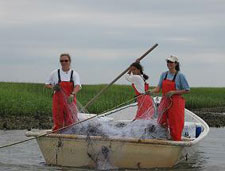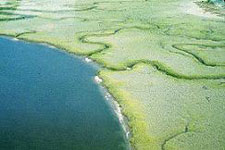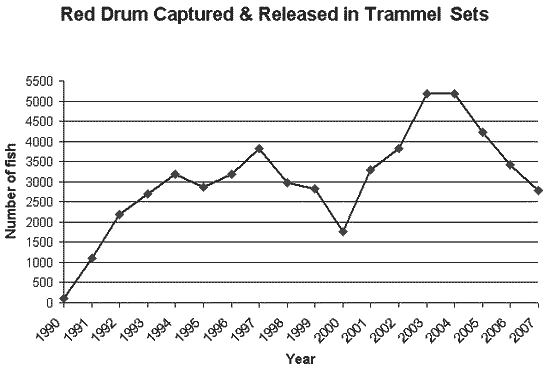Inshore Recreational Fish
 The Inshore Fisheries Research Section of the Marine Resources Research Institute conducts investigations on estuarine-dependent finfish in coastal South Carolina. Our goal is to learn as much as possible about the life-history characteristics of select species to accurately predict the impact that the recreational fishery has on them. We have been investigating various aspects of the life-history of estuarine fishes since 1985. Ultimately, our research provides resource managers with the biological basis needed to best protect recreational fishing for years to come.
The Inshore Fisheries Research Section of the Marine Resources Research Institute conducts investigations on estuarine-dependent finfish in coastal South Carolina. Our goal is to learn as much as possible about the life-history characteristics of select species to accurately predict the impact that the recreational fishery has on them. We have been investigating various aspects of the life-history of estuarine fishes since 1985. Ultimately, our research provides resource managers with the biological basis needed to best protect recreational fishing for years to come.
Presently, we are contributing information on the life-histories of spotted seatrout, red drum, southern flounder, black drum, striped mullet and sheepshead. Our efforts provide comprehensive data on many aspects of the lives of these fishes such as age, growth, diet, reproductive dynamics, recruitment and mortality. We also conduct tag-and-release studies on red drum, black drum and sheepshead.

We carry out weekly field sampling year-round in six estuarine systems in coastal South Carolina:
- Charleston Harbor
- Lower Wando River
- Ashley River
- ACE Basin
- Cape Romain
- Northern Bulls Bay/Muddy Bay.
Our sampling protocol employs trammel nets to capture target species in shallow water. We gather physical data (temperature, salinity, dissolved oxygen, tidal stage) and measure, weigh and tag fishes as appropriate. A portion of the fish we obtain in this manner are sacrificed in order to provide additional data for ageing and reproductive biology work.
Besides acquiring data via our regular sampling efforts, we obtain additional samples from anglers that participate in our Freezer Fish Program and in various Fishing Tournaments.
Numbers of fishes captured and released in trammel net surveys since 1990.
| Fish Species | Number Captured and Released |
|---|---|
| Striped mullet | 58,321 |
| Red Drum | 54,655 |
| Spotted seatrout | 43,622 |
| Spot | 34,780 |
| Southern flounder | 16,838 |
During 2007, we made 1,020 trammel net sets. In these sets, we caught 61 different species of fish. Spotted seatrout were the most abundant species in our catches, totaling over 3,700 individuals. Red drum were second with over 2,800 fish. Striped mullet, spot and Atlantic croaker rounded out the top five most abundant fish species in our trammel surveys.
We began a regular trammel net regime in 1990. Since that time, we have caught and released 54,655 red drum. Of these fish, 35,770 were tagged and released. We have recaptured 9,571 of these fish. This does not include the number of tagged fish that have been reported to us by recreational anglers.

Section Manager: Charlie Wenner
Phone Number: 843-953-9232
